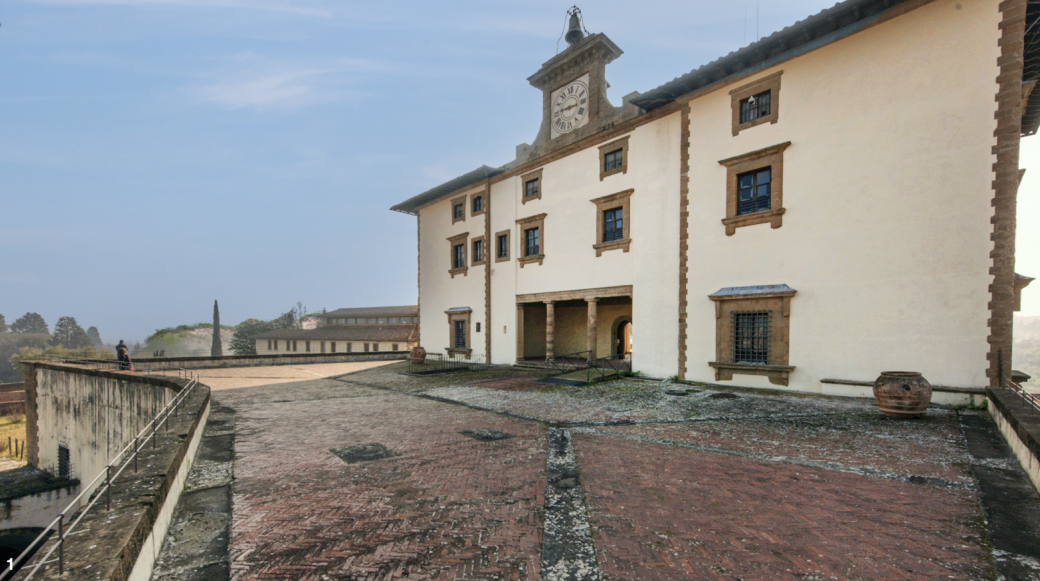Forte Belvedere, discover the most beautiful view in Florence
History and curiosities of this monument accessible for tourists and Florentines free of charge
The Fort of St. George, better known as Forte Belvedere, reopens to the public on June 25, just a few days after the Florentine Grand Depart of the Tour de France. The outdoor spaces of the Fort, including the two terraces of the Palazzina Medicea, are open free of charge Tuesday through Sunday from 10 a.m. to 8 p.m. thanks to the enhancement proposal offered by the Florentine Civic Museums and MUS.E. In addition, every Friday and Sunday at 5 p.m. and 6:30 p.m., it will be possible to participate in guided tours that will provide an understanding of the salient features of the history of the fortress and more generally of 16th-century architecture (reservations required). The cost of the guided tours is €5 (full) and €2.50 (reduced). Info and reservations: 0552768224 - info@musefirenze.it – www.musefirenze.it
 Forte Belvedere
Forte BelvedereOTHER REOPENINGS
The reopening of Forte Belvedere is part of a program of summer openings of the city's towers, gates and fortresses. Porta San Frediano, in collaboration with the Angeli del Bello Foundation, remains open until Sept. 30 on Saturdays and Sundays from 5 to 8 p.m. During the same period, the Torre della Zecca and Torre San Niccolò also remain open for visits (Fridays, Saturdays and Sundays from 5 to 8 p.m., visits every half hour). Added to this calendar are visits to the Fortezza da Basso, in collaboration with Firenze Fiera (Saturday, July 27, Saturday, August 24, Saturday, September 14, 4 to 5 to 6 p.m.).
HISTORY OF FORT BELVEDERE
It will be possible to appreciate the history and spaces of Fort San Giorgio, the construction of which was started in 1590 at the behest of Ferdinand I de' Medici as the last part of an update of the Oltrarno defensive program, devoting special attention to the bastions, gunboats, the little palace and the mysterious treasure room. Fort Belvedere, in addition to being a famous vantage point, is in fact also a valuable piece of architecture. It was built at the end of the 1500s to a design by Bernardo Buontalenti and on the orders of Grand Duke Ferdinand I de' Medici, who had just returned to Florence after his banishment from an intolerant city, and who, in order to shelter himself from possible attacks in moving from his home (Palazzo Pitti) to his offices (Palazzo Vecchio), had the famous corridor built by Vasari.
The fortress of Belvedere was to be the last stage of the Vasarian Corridor and was intended to protect the seat of government, Palazzo Pitti, the southern part of the city, to demonstrate by its majesty all the Medicean power and finally to guarantee the Grand Duke a refuge from possible uprisings. It was also planned as a hiding place for the family treasure: at the bottom of a well dug inside the central building a crypt protected from death traps was discovered.
The site on which the fort was built had already been identified at the time of the Siege of Florence by Michelangelo as a site of great strategic importance. As in other works by Buontalenti, the originality of Forte Belvedere, an urban fortress that therefore had to feature fine finishes, is manifested in the unique details of the construction of both the fortification and the inner villa, the elegant and white three-story Palazzetto del Belvederethat dominates the entire building.
The central building, the Grand Duke's residence in unhealthy times such as during the plague epidemic of the 1600s, did not fit military principles, but with its white Medici villa walls it constitutes a visible sign of Medici rule.
Grand Duke Peter Leopold in the late 18th century made public the unparalleled balcony over Florence: the fort never suffered a siege, nor did its artillery ever fire a shot. The fort's cannon blasts announced only noon for centuries, so much so that for Florentines that din was good-naturedly called "the pasta cannon."









